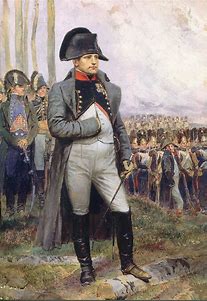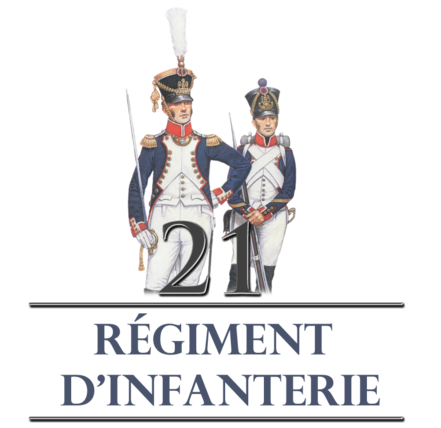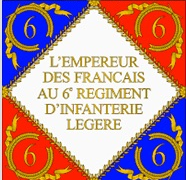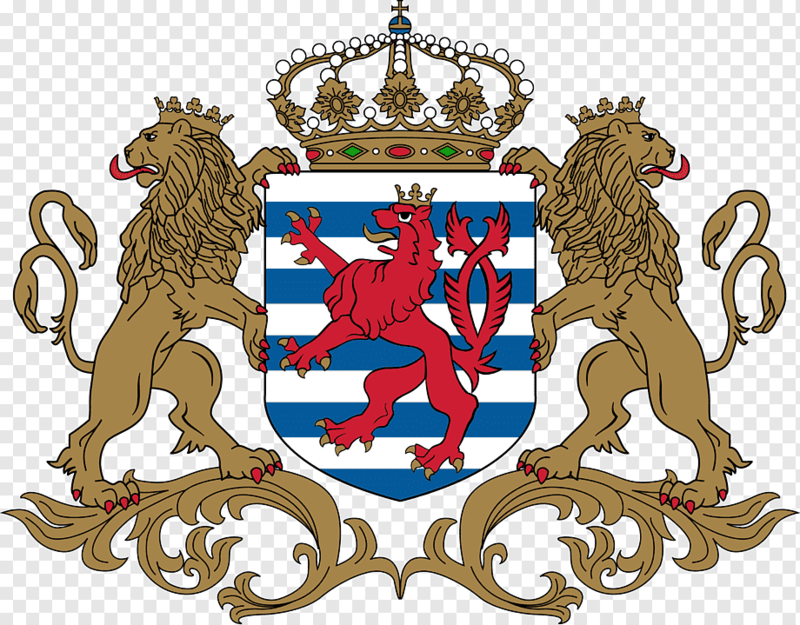Frequently Asked Questions
Q. How Do I Get in Touch Brigade Representatives ?
A. Brigade Officers:
Q. Why Bother?
A. When we first started in 1994 there was no organization to support what it is that we do. We realized early on that if something was going to happen, we would have to pool our resources and efforts. We needed some body or organization to represent Allied Forces. There was a British group that did War of 1812 events but nothing specific to th Napoleonic War.
Q. Who's in Charge?
A. Every unit has its own leader and each leader represents their unit in an open manner. We are like minded friends and acquaintances. This is not a group founded by a marechal or king, but by soldat. The goals, events, and political agenda (if there is one) is to have Napoleonic re-enactment in North America. Anyone who has similar goals is welcome.
Q. What Units are Currently Members?
A. The active infantry units are:
the 21e Regiment d'Infanterie de Ligne; 3e Regiment d'Infantrie de Ligne; the Russian Kiev Grenadiers; the Guardia Reale Italiana; We have also been joined by the British 23rd Regiment of Foot, Royal Welsh Fusiliers,
the 95th Foot Rifles Regiment; the 93rd Regiment of Foot, Sutherland Highlanders; 42 Regiment of Foot, and our Austrian unit the IR#7 von Schroeder; and Spanish unit Regimento de Puerto Rico.
Q. How Can I Get My Unit In?
A. First you need to have a unit. That means at least two paid members... You have to portray French/Allied troops or Coalition Forces (Russians, Austrians, Prussian, English, Spanish, et al) from the period 1792 - 1815.
Contact the Brigade President at: President@Brigade-Napoleon.org.
Q. What if I Do Not Have a Unit?
A. No unit? No problem! You can always join the Brigade Napoleon as an individual. Some units have used this as a starting point; first joining Brigade Napoleon as individuals, then building an unit and later applying for unit membership. This is also an excellent way for civilian impressions to get involved. All you need is an impression between the period 1792 to 1815. or
Q. Why the Name "Brigade Napoleon"?
A. When we started, we felt that the word "Napoleon" was key to identifying us a s Napoleonic re-enactors. The Brigade part naturally stemmed from the hope that we would have enough membership and a variety of units to warrant the moniker. We now have eleven active units with over one hundred twenty (120) members.
Brigade Napoleon
Peter Butrite, President
Jim Cormier, Vice President
Jason Wilkins, Secretary
Timothy Strain, Treasurer
To contact members of the Board
message us from our FaceBook page:
Brigade Napoleon
21eme Regiment d'Infanterie de Ligne (Recree) 3e Cie.
The 21eme traces their history to the oldest French regiments, starting their career as the Vaubecourt in 1598, later merging with Guyenne and eventually becoming the 21eme Demi-Brigade de Ligne. During the French Revolution and Republic they served in Germany and later part of the Armee d'Italie. Under the Empire they received their Eagle and were renamed the 21eme Regiment d'Infanterie de Ligne.
After training in the camp at Boulogne they were assigned to III Corps under Marechal Louis Davout, where they would serve for many years in "Napoleon's X Legion." Under Devout's inspired leadership they would fight at Austerlitz, Auerstadt, Eylau, Eckmuhl, and Wagram before the disastrous campaign in Russia in 1812. They were among the few regiments that defied orders and carried their Eagle out of Russia, though with only 92 men fit for duty out of over 4,000 that marched in. Reformed in 1813 they were eventually forced to surrender at Dresden after the rest of the army was defeated at Leipzig.
Reformed once more they fought the British at Bergen-Op-Zoom in 1814 and helped capture a color of the British Foot Guards. After the 1st Abdication they passed into service of the Bourbons till the 100 Days when they rallied to Napoleon. At Waterloo they were part of d'Erlon's ill-designed attack that was shattered by the charge of the British Union Brigade. Some rallied to fight again but after the defeat of la Guarde they joined the rest of the army in flight. With that the Napoleonic Wars ended.
The 3e Cie focuses on wearing the Bardin Regulation uniform, though since our focus is the waning years of the Empire a variety of uniforms were put into service, some very minimalistic. As representing a center company, we have roles for a fusilier, musician or Service Sante, the medical service, and camp followers. Besides events in North America, our members have participated in 200th anniversary events like Fishguard, Marengo, Austerlitz, Jena-Auerstadt, Borodino, Leipzig and of course Waterloo. Our brothers and sisters in our parent regiment in the UK and Continent have opened the door for many opportunities and welcome our participation.
Our members are centered in the Midwest and on the West Coast, ready to march with you in the Empereur's service. Vive l'Empereur!
6eme Regiment de Legere
The 6eme de Legere was originally created
as the 6e Bataillon de Chasseurs Bretons
in 1788 just before the break out of the French revolution on July 14th 1789.
Throughout the revolution the regimnet would change their regiment names to suit the army they were with; from 6e Bataaillon d'Infanterie Legere (6e Bataillon de Chasseurs) in 1791 to the 6e Demi-Brigade d'Infanterie Legere in 1795. They would eventually serve in the army of Italy under the command of the newly appointed general Napoleon Bonaparte during his Italian campaign of 1796 - 1797. During the Consulate of Napoleon; the regiment would take part in the battles of Italy and earning their first regimental honors at the battle of Marengo on June 14th, 1800. By 1803 the regiment would have a final name change for the unit and was reorganized into the 6eme Regiment d'Infanterie Legere.
During the reign of the empire the regiment would distinguish themselves on several fronts. On October 14th, 1805 at the battle of Elechingen led by Marshall Ney our regiment led the way across the main bridge to capture the abbey and all its brick works. During the second day of the battle of Essling, May 22nd, 1809, while the army was retreating back across the Danube, the 6eme regiment was one of the regiments forming a rear guard for the army. Thought the regiment and the army would have their revenge against the Austrians at the battle of Wagram on July 5 - 6, 1809. However, the most distinction the regiment received was during the peninsula war. At the siege of Ciudad Rodrigo July 10th, 1810, two volunteers from the regiment Carabiner Bourbois and Chasseur Belleze climbed over the first two breeches to arrive at the crest of the second rampart before the rest of the infantry column charged forward and took the fortifications. At Salamanca on July 22nd,1812 the 6eme was a part of the reserve division that never saw combat that day. That would change the next day.
At the Battle of Garcia Hernandez the rear guard which included the 6eme regiment was attacked by the King's German Legion cavalry squadron. Formed up into squares to repel the cavalry most of General Foy's division were taken prisoner that day, but the regiment was not largely a part of the prisoner count. On October 29th, 1812, while Wellington was marching back to Portugal the 6eme regiment would have their revenge. Led by Capitaine Guingret, 54 men of the 6eme Legere across the Duero River at Tordesillas, Spain. The soldiers stripped naked, leaving their uniforms on the riverbank, and swam silently across the river towing a raft with their weapons and ammunition to keep the cartridges dry. This act of these brave men forced Wellington to order a retreat farther back. Through the winter of 1812 Napoleon was licking his wounds after the disastrous retreat from Moscow and another war was brooding and the 6eme regiment was ordered out of Spain to fight in Germany. From Lutzen and Leipzig in 1813 to Toulouse in 1814 the regiment fought hard but could not help stop the inevitable fall of Napoleon's empire. When Napoleon returned from exile the regiment was called up for one last campaign and would have one last chance of glory and victory in Belgium. While they were a part of the victory at Warve on June 19th, 1815 it mattered not in the end for Napoleon was defeated for good the day before at the battle of Waterloo.
3eme Cuirassiers
Cuirassiers were direct descendants of the medieval knights and could decide the outcome of a battle with their sheer weight and brute force. There were eventually 14 regiments of cuirassiers. Originally the 25 understrength regiments of Calvalerie were converted into 18 regiments. The first 12 received the strongest and tallest men and horses. Napoleon gave them armor and they became cuirassiers. He considered them elite troops, and gave them red plumes and epaulettes, and bursting grenades on their coat turnbacks and shabraques.
The 33 Regiment de Cuirassiers has a long history dating back to 1635 when Timoleon de Sercourt d'Esclainvilliers inherited his father's company of Light horse. The same year in May, Cardinal Richelieu decided to reorganize the French Cavalry and Esclainvilliers' company became part of Cardinal Due regiment. In 1791 the Regiment became the 3e Regiment de Cavalerie and in 1802 the name changed to the 3e Regiment de Cavalerie-Cuirassiers, finally becoming the 3e Regiment de Cuirassiers in 1803
During the Napoleonic Period the 3e Regimant de Cuirassiers participated in the following campaigns: Prussia 1806; Poland 1807; Austria 1809; Russia 1812; Germany 1813; France 1814; Belgium 1815, and saw action in the following battles: 100 Marengo; 1805 Austerlitz; 1806 Jena; 1807 Heilsberg, Friedland and Eylau; 1809 Eckmuhl, Essling, and Wagram; 1812 La Moskowa; 1813 Dresden and Leipzig; 1814 Champaubert; 1815 Fleurus and Waterloo. The 3e Regiment de Cuirassiers obtained Battle Honours at Austerlitz, Jena, Eylau, Friedland, Eckmuhl, Essling, and Wagram. t Austerlitz the 3m3 was commanded by Colonel Claude Antoine Hippolyte Preval, and served as part of the 1st Heavy Cavalry Division under command of Etienne Marie Antoine Champion de Nansouty. The 3eme took part in the cavalry charge against the Russian Imperial Guard to retake the Pratzen Heights. This charge destroyed not only the elite Russian Infantry, but their mounted counterparts as well
At the Battle of Jena, the 3eme Regiment de Cuirassiers was organized into four squadrons and was part of the 1st Heavy Cavalry Division under command of Etenne Marie Antoine Champion de Nansouty, and served in the 1st Heavy Calvary Division was part of the French Cavalry Reserve, commanded by Marshall Prince Joachim Murat.
At the battle of Eylau, the 3eme Regiment de Cuirassiers was commanded by Colonel Jean Louis Richter, and attached to the 1st Heavy Cavalry Division, part of the French Cavalry Reserve, commanded by Marshall Prince Joachim Murat. At 11:30 on 8 February 1807, the 10,700 men of the Reserve Cavalry stepped off into the driving snow, to charge huge columns of Russian Infantry marching on Eylau. By all accounts, they were murdered by the French Heavy Horse.
At the battle of Friedland, the 3eme Regiment de Cuirassiers was commanded by Colonel Jean Louis Richter attached to the 1st Heavy Cavalry Division under command of Etienne Marie Antoine Champion de Nansouty.
The 3eme Regiment de Cuirassiers took part in Nansouty's flanking charge against superior number of Russian cavalry under Uvarov. In this action Uvarov chased Gouchy's dragoons, suddenly Nansouty's cuirassiers appeared and charged their flank. At the same time Grouchy wheeled around and charged headlong into the Russian cavalry. Uvarov and his cavalry fell back, but both sides continued to charge and countercharge against each other for the next few hours, until Uvarov finally gave up and rode back to the Russian lines.
The 3e Regiment de Cuirassiers wore uniforms consisting of a dark national blue coat, red epaulettes and plume attached to their helmets. The 3e Regiment de Cuirassiers collars and cuffs were red to aid in identification of regiments. In addition, the 3e Regiment de Cuirassiers wore distinctive body amor, consisting of an iron neo-classical helmet and front and back plates which formed a cuirass. Due to this, they were known as "The Men of Iron" and "The Big Brothers of the Emperor." The Cuirassiers were armed with long straight swords and pistols. While the 3e Regiment de Cuirassiers was issued carbines inspection reports indicate they were never issued or carried by the Regiment.
From 1804 - 1815 the 3e Regiment Cuirassiers was commanded by the following Colonels:
1801 Claude-Antoine-Hippolyte Preval
1806 Jean-Louis Richter
1811 Charles-Eugene-Lalaing d'Audenarde
1813 Jean-Guillaume Lacroix
Coalition Forces
42 nd Royal Highland Regiment
At the time of the Battle of Waterloo (June 18th, 1815) during the Napoleonic Wars, the 42nd Royal Highland Regiment was already ninety years old. It was first raised as a military police force in 1725, charged with keeping "watch upon the braes" by guarding against lawlessness that might take the form of anything from theft of cattle to open rebellion by those who wished to see a change of monarchs. Its success lead it to be Regimented as the first British Army Regiment whose uniform included such items of Scottish dress as the kilt and Highland Bonnet, making its soldiers instantly distinguishable from not only the Lowland Scottish, but also the English, Irish, and welsh Regiments. We portray the Regiment as it might have appeared on that rain sodden field in Belgium near the end of the Hundred Days when Napoleon tried to return to power after his first exile from France.
After Napoleon escaped his cage on Elba, the 42nd was rushed to Belgium with other British Army Regiments. Two days before Waterloo took part in the battle at the crossroads of Quartre Bras, where it was heavily engaged against the French Cavalry and Infantry. After the battle, the British and combined Coalition Force was pulled back to a more defensible position overlooking a valley near the village of Waterloo, where Napoleon vainly crashed his army against a rocky shore composed of European powers. By the evening of the 18th of June, Napoleon was defeated and on the run.
Before Waterloo the Regiment had served in Spain, Portugal, and France during the Napoleonic Wars, and earlier, in the 1700's. had served The King in places including Flanders and North America, where it fought during both the French and Indian War and the American Revolution.
The uniform we wear is a combination of items of Highland origin (the Kilt, diced Hose and Bonnet; along with the Highland Broad Sword carried by the Sergeants and Officers, and the British Pattern smoothbore Musket and Bayonet.
Our re-created 42 has members currently in Ontario, New England, Maryland, and Virginia, and is always looking for strong lads willing to take up arms in defense of their King, and fight for the defeat of the Despot, Bonaparte. If you have an interest in history and wish to learn more about the period at the beginning of the rise of modern Europe, stop by our encampment, where you might just be able to feel the joy of taking the King's Shilling.
For more information, contact Iain Burns at iain51hdbw@msn.com, or visit our Facebook page at https://www.facebook.com/42ndRoyalHighlandRegimentNo3Coy1815
Napoleon's armies between 1809 and 1812 contained more allied troops than French nationals. The largest proportion of these allied forces were German. However, what we now know as Germany was then a group of independent states know as the Confederation of the Rhine (Das Rheinbund). There were both large kingdoms, such as Bavaria, and tiny principalities, such as the Grand Duchy of Wurzburg in Rheinbund. What united them universally was a requirement to provide troops to the French Emperor, who created the Reinbund in 1806 and was pledged to protect it.
The Grand Duchy of Wurzburg contributed an Infantry Regiment (The Grossherzoglich Wurzburgisches Infantrie Regiment, aka GWIR) and a small cavalry regiment (Wurzburg Chevau-Leger Regiment) to support France. We have chosen an elite company of the Wurzburg Infantry to represent the German effort within Brigade Napoleon. The Leicht Kompanie (French - Voltiguers, and sometimes called Jaegers by the Germans) were trained to skirmish and scout with an independence that the rest of the infantry was generally not allowed. They were also used to spearhead attacks and oppose enemy light troops.
Our impression is based on how the Regiment appeared during the epic Siege of Girona in Spain during 1809. This was the longest siege of the entire Napoleonic Wars and the GWIR played a significant role in the multi-national besieging force. The fortress eventually fell to the French and allies after ore than nine months of siege. Numerous assaults by GWIR, and others, on parts of the fortified city gradually yielded more of the outworks to the besiegers. When defending Spaniards were reduced to holding just the citadel itself, and were close to starvation, a final allied attack convinced them to surrender.
The GWIR went on to participate in other operations, and occupation, in Spain up to the end of 1813. In the meanwhile, Napoleon requested additional troops from his allies after the disastrous Russian campaign. Wurzburg dutifully raised another two battalions of the GWIR which went to northern Germany to campaign. These units fought at the battle of Grossbeeren with Marshal Oudinot's corps and were also at Dennewitz and then Leipzig. After the great battle of Leipzig in October, a defeat for Napoleon that saw some of the German troops defect to the enemy, the French disarmed their remaining German allies and sent them home. The faithful Wurzburgers returned to their lands, which were incorporated into Bavaria after Napoleon's defeat in 1814.
The Gran Duchy of Wurzburg was a typical German ally state of Napoleon's empire. In an effort to improve the future standing of their Duchy, they served with courage and distinction in Napoleon's many military endeavors. Several Officers and men were awarded the coveted Legion D'honneur by France during this time, especially during the Siege of Girona. The GWIR of Brigade Napoleon is commited to representing Napoleon's German allies with the same honor and valor that they displayed to their own "Kaiser von Schlachten" (Emperor of Battles) on the fields of conflict so long ago.
The Grossherzoglich Wurzburgisches Infantrie Regiment









